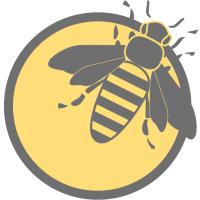Diversity and specialization responses to climate and land use differ between deadwood fungi and bacteria
Ecography, (2023)DOI: https://doi.org/10.1111/ecog.06807
Abstract
Climate and land use are major determinants of biodiversity, and declines in species richness in cold and human exploited landscapes can be caused by lower rates of biotic interactions. Deadwood fungi and bacteria interact strongly with their hosts due to long-lasting evolutionary trajectories. However, how rates of biotic interactions (specialization) change with temperature and land-use intensity are unknown for both microbial groups. We hypothesize a decrease in species richness and specialization of communities with decreasing temperature and increasing land use intensity while controlling for precipitation. We used a full-factorial nested design to disentangle land use at habitat and landscape scale and temperature spanning an area of 300 × 300 km in Germany. We exposed four deadwood objects representing the main tree species in Central Europe (beech, oak, spruce, pine) in 175 study plots. Overall, we found that fungal and bacterial richness, community composition and specialization were weakly related to temperature and land use. Fungal richness was slightly higher in near-natural than in urban landscapes. Bacterial richness was positively associated with mean annual temperature, negatively associated with local temperature and highest in grassland habitats. Bacterial richness was positively related to the covariate mean annual precipitation. We found strong effects of host-tree identity on species richness and community composition. A generally high level of fungal host-tree specialization might explain the weak response to temperature and land use. Effects of host-tree identity and specialization were more pronounced in fungi. We suggest that host tree changes caused by land use and climate change will be more important for fungal communities, while changes in climate will affect bacterial communities more directly. Contrasting responses of the two taxonomic groups suggest a reorganization of deadwood microbial communities, which might have further consequences on diversity and decomposition in the Anthropocene.
Links and resources
Tags
community
@amyspublication's tags highlighted


